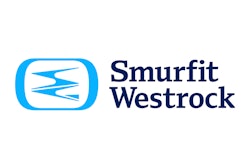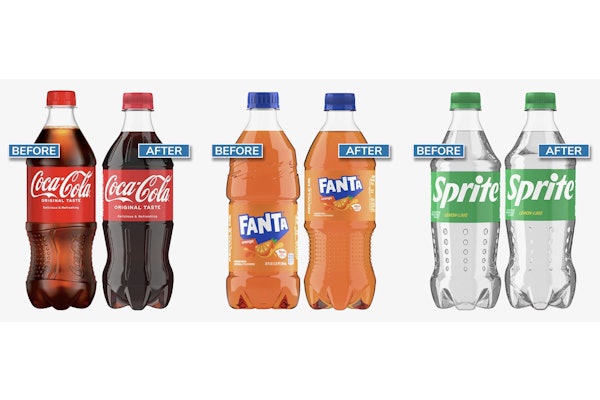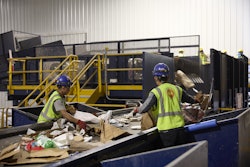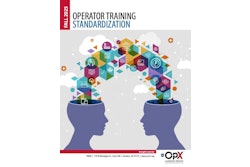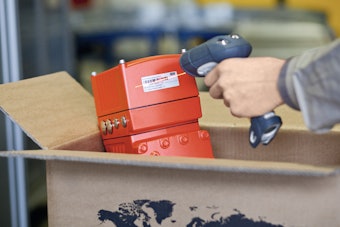Welcome to Sustainable Packaging Explained, your guide to sustainable materials, methods, and package design, produced by the Emerging Brands Alliance, in conjunction with Packaging World. Today, we're looking at recycled materials. By incorporating recycled materials into package design, we're not only reducing packaging waste, but also conserving energy and resources.
And, as consumers have become increasingly conscious of their environmental footprint, The demand for sustainable products is on the rise. Regulations and standards are also playing a pivotal role in ensuring that more packaging is sustainable. Extended Producer Responsibility, or EPR, is gaining traction as a way to ensure brands take ownership of their packaging's life cycle.
EPR means that companies should be responsible for the environmental effects of their products at every stage, from choosing materials and making the products, to how they're used and thrown away. EPR fees are collected and managed by a system operator and used to fund packaging waste management related activities.
There are a number of states in the U. S. with active EPR regulations, and some of them directly apply [00:01:00] to recycled content. For example, California will require 50 percent post consumer recycled content in plastic beverage bottles by 2030, while Washington requires manufacturers to include a minimum amount of recycled plastic in their plastic product packaging, and New Jersey also requires manufacturers to meet minimum recycled content standards. Packaging World editor Matt Reynolds tells us more about recyclable materials.
There's a lot of conversation around who should be setting these EPR fees. Now generally the packaging industry recommends having an independent consortium of stakeholders who would work together with the government to set the fees and then distribute the funds.
Now this could be in the form of a producer responsibility organization, or a PRO for short, with member CPGs. Now the idea is that these PROs act as a custodian third party that member CPGs in an EPR state feed. The PROs then distribute the funds to pay for post consumer packaging recovery or disposal.
Now, many CPGs see these PROs as industry knowledgeable and equitable, thus preferable to top down legislation of [00:02:00] how the fees should be allocated. But if there's a PRO for every state or every governing body, that could get confusing. You have to wonder if a single national or federal attitude could work better for CPGs than localized PROs, but still, the localized PROs tend to be preferable than localized governmentally allocated funds.
There are many examples of brands that are implementing recycled content into their packaging. Heinz Brazil is moving to a new bottle that contains 30 percent recycled PET for its ketchup, barbecue sauce, and mayonnaise [00:03:00] products. The move will save around 700 metric tons of virgin material per year and will help the company's global goal of producing 100 percent of its packaging with recycled, recyclable, or compostable material by 2025.
Other examples are the California Dairy Company, Clover Sonoma, that has moved its 1 gallon organic milk to a new jug that contains 30 percent recycled high density polyethylene. And Just Date, that moved from a cardboard carton for its granulated date sugar to a new 12 ounce package that is a flexible stand up pouch made up of 40 percent recycled content HDPE and 90 percent recycled PET.
And luxury champagne producer, Veuve Clicquot, crafted a gift box made from 50 percent hemp and 50 percent recycled wood fiber that replaces its 100 percent virgin fiber paper and paperboard gift box.
PCR is an acronym that stands for post consumer recycled content, or more specific to plastics, post consumer resin.
It just depends on who you ask. Regardless, we're currently seeing [00:04:00] PCR being fed back into packaging systems as a drop in at some percentage of the overall packaging volume. Say 30%. As circular systems develop and more content is recovered, we hope to see those numbers increase to perhaps as much as 100 percent PCR or no virgin material.
There's a lot of heavy lifting in infrastructure and consumer adherence to do first. Using recycled content also has challenges. In a production setting, substrates that include recycled content sometimes can't be run on the same equipment as virgin materials unless the speed of the line is significantly decreased.
This can deter manufacturers from choosing recycled content if they may need to purchase new equipment to run the material. But there is a demand for packaging equipment capable of accommodating fiber based and flexible materials, so some brands are working with their OEMs to retrofit existing machines to run a bigger variety of packaging formats.
Also, an insufficient supply of quality material that matches the manufacturer's specifications may be an issue without sufficient collection and processing of recycled materials. As always, it is best to perform a lifecycle analysis [00:05:00] of a product to determine the best packaging solution for your situation.
Thanks for watching and be sure to subscribe to our YouTube channel for more videos on packaging and scaling operations. And join us at the Emerging Brands Alliance for year round resources to grow your brand.



